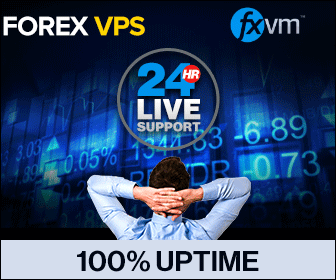Best VPS for Forex Trading, Enhancing Your Trading Efficiency

Table of Contents
Are you a forex trader looking to enhance your trading experience? If so, one crucial aspect to consider is the selection of a reliable and efficient Virtual Private Server (VPS). A VPS can significantly improve the speed, stability, and security of your trading platform, allowing you to execute trades with minimal latency and interruptions. In this article, we will explore the top VPS providers in the market and discuss the key factors to consider when choosing the best VPS forex trading.
In the fast-paced world of foreign exchange (forex) trading, traders are always seeking innovative ways to optimize their strategies and stay ahead in the highly competitive markets. One such advancement that has revolutionized the trading landscape is automated trading. This article explores the concept of automated trading in forex, its benefits, risks, popular strategies, and how to select, set up, and monitor an automated trading system.
What is Automated Trading in Forex?
| Company | Rating | Banner |
|---|---|---|
| ForexVPS | ★★★★★ |  |
| FXVM | ★★★★☆ |  |
| Jayahost | ★★★☆☆ | ~ |
| SocialVPS | ★★☆☆☆ | ~ |
Automated trading, also known as algorithmic trading or black-box trading, is the use of computer programs and algorithms to execute forex trades automatically. These programs are designed to analyze market data, identify potential trading opportunities, and execute trades without human intervention. The system operates based on predefined rules and criteria set by the trader.
Automated trading offers several advantages for forex traders. Firstly, it enables traders to execute trades 24/5, taking advantage of opportunities even when they are not actively monitoring the markets. This eliminates the need for constant monitoring and allows traders to have a more balanced lifestyle.
Secondly, automated trading systems can process vast amounts of data within milliseconds, enabling them to make split-second decisions, which would be impossible for a human trader. This speed is crucial in the fast-moving forex markets where opportunities can arise and vanish swiftly.
Risks and Limitations of Automated Trading
While automated trading can be highly efficient, it is not without its risks. One major concern is the potential for technical failures, such as internet outages or software glitches, which can lead to missed opportunities or unintended trades.
Moreover, since automated systems operate based on predefined algorithms, they may not adapt well to sudden market changes or black swan events. Human intervention may still be necessary in extreme circumstances.
1. Moving Average Crossover Strategy
The moving average crossover strategy is a common technique used in automated trading. It involves the use of two moving averages with different timeframes. When the shorter-term moving average crosses above the longer-term moving average, it generates a buy signal, and vice versa.
2. Bollinger Bands Strategy
Bollinger Bands are volatility indicators that consist of a moving average and two standard deviation lines. In automated trading, the strategy involves buying when the price touches the lower band and selling when it touches the upper band.
3. Breakout Strategy
The breakout strategy focuses on identifying key support and resistance levels. When the price breaks above a resistance level or below a support level, an automated trading system may generate a trade signal to enter or exit a position.
4. Factors to Consider
When selecting an automated trading system, it’s important to consider several factors. These include the system’s track record, risk management features, compatibility with your trading style, and the level of customization available.
Before deploying an automated trading system, thorough backtesting and optimization should be conducted. Backtesting involves testing the system on historical data to evaluate its performance, while optimization aims to fine-tune the system’s parameters for optimal results.
Choosing the right trading platform is crucial for automated trading. Look for platforms that offer robust automation features, compatibility with your preferred broker, and a user-friendly interface.
Once you’ve chosen a platform, follow the installation instructions provided by the system developer. Configure the system based on your trading preferences, such as risk tolerance, trade size, and the number of simultaneous trades.
While automated trading systems can operate independently, regular monitoring is still essential. Keep an eye on the system’s performance, ensure proper execution of trades, and stay updated with any news or events that may impact the markets.
Based on the system’s performance and changing market conditions, adjustments may be necessary. This could involve modifying the system’s parameters, adding new strategies, or even temporarily pausing the system during extreme market volatility.
One significant advantage of automated trading is eliminating the influence of emotions on trading decisions. Emotional biases, such as fear and greed, can cloud judgment and lead to poor decision-making. Automated systems help maintain discipline and objectivity.
While automation reduces the impact of emotions, traders should still adhere to sound trading principles. Define risk management rules, set realistic expectations, and periodically evaluate the system’s performance to ensure it aligns with your trading goals.
The future of automated trading lies in advancements in artificial intelligence (AI) and machine learning (ML). These technologies can enable trading systems to adapt and learn from market patterns, continuously improving performance and adapting to changing conditions.
As automated trading gains popularity, regulators are paying closer attention to ensure fair and transparent markets. Regulatory frameworks are evolving to address potential risks associated with algorithmic trading while fostering innovation and efficiency.
Conclusion
Automated trading in forex has revolutionized the way traders approach the markets. With the ability to execute trades automatically based on predefined rules and criteria, traders can optimize their strategies, increase efficiency, and reduce the impact of emotions on trading decisions. However, it is essential to consider the benefits, risks, and limitations of automated trading and select the right system that aligns with your trading goals.
Forex trading requires quick and reliable execution of trades, as even a slight delay can result in missed opportunities or financial losses. A VPS windows acts as a remote server that runs 24/7 and provides a stable internet connection, ensuring that your trading platform is always accessible and responsive. By hosting your trading software on a VPS, you can eliminate the risks associated with power outages, internet interruptions, or computer failures.
Selecting the right VPS for forex trading is crucial to ensure a smooth and efficient trading experience. Here are some key factors to consider:
Choose a VPS provider that offers servers located near your broker’s data center or trading servers. The closer the server is to your broker, the lower the latency, resulting in faster trade execution.
Look for a VPS provider that offers a high uptime guarantee, ideally 99.9% or above. Reliability is crucial in forex trading, as any downtime could result in missed trading opportunities or financial losses.
Consider a VPS that allows you to easily upgrade or downgrade your resources as your trading needs evolve. Scalability ensures that your VPS can handle increasing trade volumes without any performance issues.
Ensure that the VPS provider has robust security measures in place, such as firewalls, DDoS protection, and regular backups. The security of your trading platform and personal information should be a top priority.
Choose a VPS forex with reliable and responsive customer support. In case of any technical issues, you should be able to reach out to their support team and receive prompt assistance.
Now, let’s explore some of the leading VPS providers in the market that cater specifically to forex traders:
Provider A offers VPS solutions optimized for forex trading. Their servers are strategically located near major financial hubs, ensuring low latency and fast trade execution. With advanced security measures and reliable customer support, Provider A is an excellent choice for traders seeking a top-notch VPS service.
Provider B stands out with its cutting-edge technical features, including SSD storage, dedicated IP addresses, and powerful CPU options. Their VPS plans are highly customizable, allowing traders to tailor their resources according to their specific requirements.
Provider C focuses on scalability and flexibility, offering VPS solutions that can easily adapt to changing trading needs. With their user-friendly control panel, traders can effortlessly upgrade or downgrade their resources as per their trading volume.
Selecting the best VPS for forex trading can significantly enhance your trading experience by providing speed, stability, and security. Consider the key factors mentioned in this article, such as server location, reliability, scalability, security, and customer support when choosing a VPS provider. By opting for a reliable VPS and following the optimization tips, you can optimize your forex trading experience and stay ahead in the dynamic forex market.
FAQs
1. Can automated trading systems guarantee profits in forex?
No, automated trading systems do not guarantee profits. They are tools that assist traders in executing trades based on predefined rules and criteria. Success ultimately depends on the effectiveness of the trading strategy.
2. How much capital do I need for automated forex trading?
The required capital for automated forex trading varies based on the trading strategy, risk tolerance, and broker’s requirements. It is recommended to consult with a financial advisor or broker to determine an appropriate capital amount.
3. Can I customize an automated trading system?
Yes, many automated trading systems allow customization to align with individual trading preferences. This includes setting risk parameters, trade sizes, and selecting specific strategies to be implemented.
4. Are there any risks involved with automated trading?
Yes, automated trading carries certain risks, such as technical failures, market volatility, and reliance on historical data. Traders should understand the risks involved and regularly monitor and evaluate the system’s performance.
5. Is it possible to combine manual and automated trading strategies?
Yes, it is possible to combine manual and automated trading strategies. Traders can use automated systems to execute certain trades while maintaining the flexibility to make manual decisions based on their own analysis and market conditions.